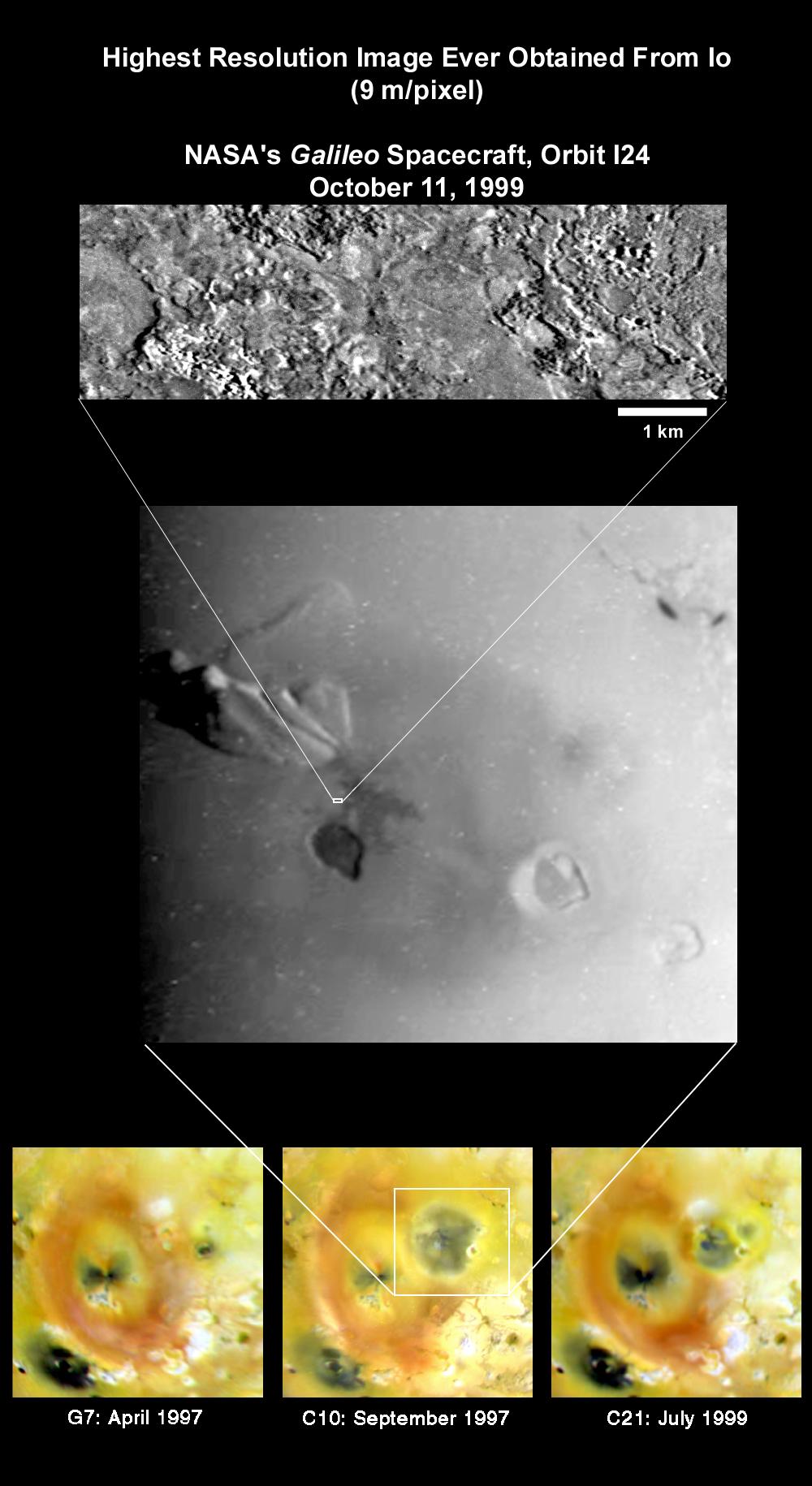

The highest resolution image ever of Jupiter's volcanic moon Io, (the black and white image at top), was taken by NASA's Galileo spacecraft on October 10, 1999, from an altitude of 617 kilometers (417 miles). It shows an area about 7.2 kilometers (4.5 miles) long and 2.2 kilometers (1.4 miles) wide. Features as small as 9 meters (30 feet) can be discerned, providing a resolution which is 50 times better than the previous best resolution acquired by the Voyager spacecraft in 1979.
The box drawn in the center image, a Galileo image of Io taken earlier in the mission, shows the area displayed in the new image at top. The three color images below show the volcanic region from a much higher altitude than the other images and follow a volcanic eruption observed by Galileo earlier in mission
This new image targeted lava flows that erupted from the volcano Pillan. A complex mix of smooth and rough areas can be seen with clusters of pits and domes, many of which are the size of houses. The volcanic features are similar to those found on Earth and Mars. However, this combination of different types of lava flows has not been seen before in such a small area, demonstrating the variety of volcanic processes that continue to change the surface of Io.
North is to the top of the pictures and the Sun illuminates the surface from the right. In the top and middle images the Sun is only a few degrees above the horizon, emphasizing topography. Galileo scientists estimate that the cliff on the left side of the image ranges from 3 to 10 meters (10 to 33 feet) high.
In 1997 Galileo caught Pillan in the process of erupting. The explosion blanketed an area 400 kilometers (250 miles) in diameter with ash as seen in the series of three color images at the bottom. These images show the changes that have occurred at Pillan over the last three years. Pillan is the new dark spot in middle color frame and the big, red ring seen in all three images is formed by the plume from the nearby volcano Pele. Galileo's camera and near-infrared mapping spectrometer measured the temperatures of the lavas during the eruption and found that they were hotter than any known eruption on Earth in the last two billion years.
Image produced by: Laszlo Keszthelyi, Cynthia Phillips, and Alfred McEwen, Planetary Image Research Lab. (PIRL), Lunar and Planetary Lab. (LPL), University of Arizona
The Jet Propulsion Laboratory, a division of the California Institute of Technology in Pasadena, manages the Galileo mission for NASA's Office of Space Science, Washington, D.C. Additional information about Galileo and its discoveries is available on the Galileo mission home page at http://galileo.jpl.nasa.gov/. Background information and educational context for the images can be found at http://galileo.jpl.nasa.gov/images/io/ioimages.html.
NASA's Planetary Photojournal PIA-02507
October 22, 1999